Figures & data
Figure 1. In vitro antioxidant and scavenging effects of MBSAE and gallic acid (GA) against ABTS radical (A) and hydrogen peroxide (B).
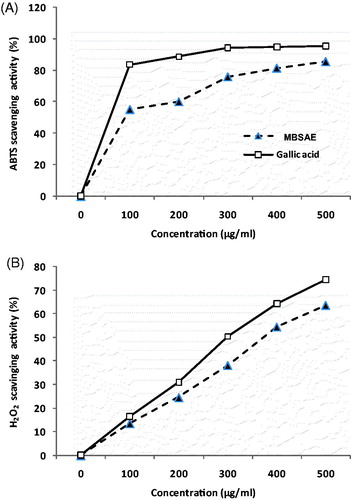
Table 1. Total polyphenols and anthocyanins contents and EC50 values of the ABTS radical as well as hydrogen peroxide of the MBSAE and gallic acid.
Table 2. Effect of MBSAE, famotidine (FAM) and gallic acid (GA) on ER-induced esophageal mucosa lesions.
Figure 2. Esophageal histology showing the protective effects of MBSAE, famotidine (FAM) and gallic acid (GA) on ER-induced histological changes in esophagus. Animals were treated with various doses of MBSAE (25, 50 and 100 mg/kg, p.o.), FAM (20 mg/kg, b.w., p.o.), GA (50 mg/kg, p.o.) or vehicle (H2O) during 6 h after ER induction. (A) Control; (B) ER; (C, D and E) ER + MBSAE (25, 50 and 100 mg/kg, p.o., respectively; (F) ER + FAM (20 mg/kg, b.w., p.o.); (G) ER + GA (50 mg/kg, p.o.).

Table 3. Effect of MBSAE, famotidine (FAM) and gallic acid (GA) on ER-induced changes in pH, tirable acidity and volume of gastric juice.
Figure 3. Effect of MBSAE, famotidine (FAM) and gallic acid (GA) on ER-induced changes in esophageal MDA levels. Animals were treated with various doses of MBSAE (25, 50 and 100 mg/kg, p.o.), FAM (20 mg/kg, b.w., p.o.), GA (50 mg/kg, p.o.) or vehicle (H2O) during 6 h after ER induction. The data are expressed as mean ± SEM (n = 10). *p < 0.05 compared to the control group and #p < 0.05 compared to the ER group.
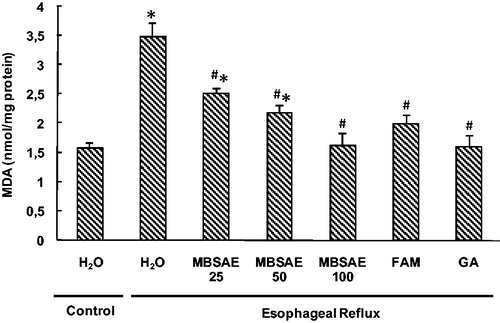
Figure 4. Effect of MBSAE, famotidine (FAM) and gallic acid (GA) on ER-induced changes in esophageal antioxidant enzymes SOD (A), CAT (B) and GPx (C). Animals were treated with various doses of MBSAE (25, 50 and 100 mg/kg, p.o.), FAM (20 mg/kg, b.w., p.o.), GA (50 mg/kg, p.o.) or vehicle (H2O) during 6 h after ER induction. The data are expressed as mean ± SEM (n = 10). *p < 0.05 compared to the control group and #p < 0.05 compared to the ER group.
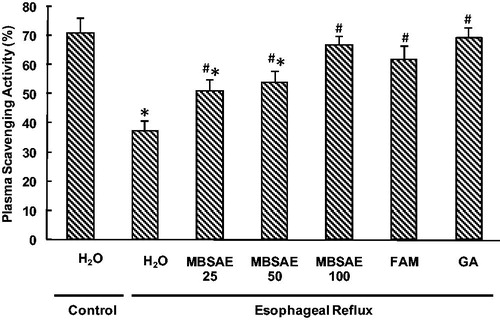
Figure 5. Effect of MBSAE, famotidine (FAM) and gallic acid (GA) on ER-induced changes in esophageal non-enzymatic antioxidants levels: thiol groups (A) and reduced glutathione (B). Animals were treated with various doses of MBSAE (25, 50 and 100 mg/kg, p.o.), FAM (20 mg/kg, b.w., p.o.), GA (50 mg/kg, p.o.) or vehicle (H2O) during 6 h after ER induction. The data are expressed as mean ± SEM (n = 10). *p < 0.05 compared to the control group and #p < 0.05 compared to the ER group.
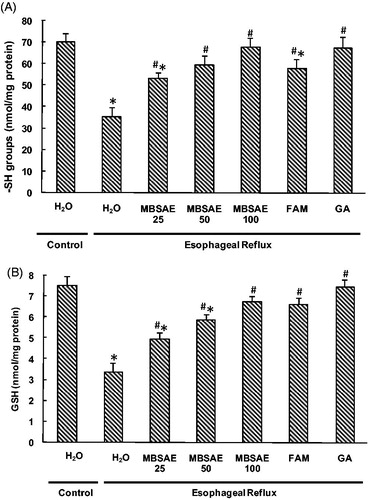
Figure 6. Effect of MBSAE, famotidine (FAM) and gallic acid (GA) on ER-induced changes in PSA. Animals were treated with various doses of MBSAE (25, 50 and 100 mg/kg, p.o.), FAM (20 mg/kg, b.w., p.o.), GA (50 mg/kg, p.o.) or vehicle (H2O) during 6 h after ER induction. The data are expressed as mean ± SEM (n = 10). *p < 0.05 compared to the control group and #p < 0.05 compared to the ER group.
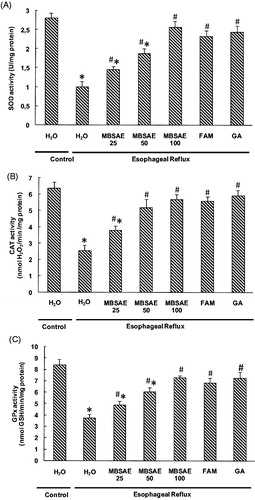
Table 4. Effect of MBSAE, famotidine (FAM) and gallic acid (GA) on ER-induced changes in hydrogen peroxide, free iron and calcium levels.
